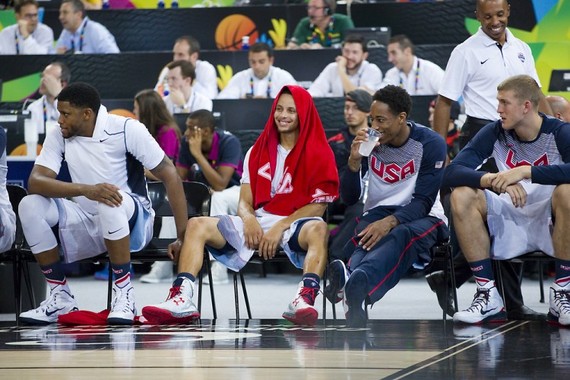Ever wonder why you don't hear about ankle arthritis or ankle replacements? The ankle doesn't get arthritis, except if injured. Why is this, when our whole body rests on these relatively small joints? And what does that mean for Steph Curry?
The bearing surface of joints is the articular cartilage. It is the white, shiny material you see when you crack open the chicken wing. When that surface wears down to the underlying bone you have the most common type arthritis: traumatic arthritis. The joint can wears down from an injury that kills the cells that keep it healthy, or from a loss of the normal alignment -- like a mis-aligned car whose tires wear irregularly. If the cartilage is repaired or the alignment fixed, arthritis can often be prevented.
In the ankle, cartilage looks just the same as it does in the hip or the knee. Yet something about it prevents it from wearing away without an initial injury. Despite being a quarter of the size of the larger joints, the degenerative disease called osteoarthritis rarely happens in the ankle. No one knows why.
So if the basketball players of the world never injure their ankles, they never end up with artificial ankle joints. But Steph Curry -- and anyone who keep twisting the joint -- are nonetheless asking for trouble. Here is why.
When the ligaments surrounding the joint become stretched or torn, the bones move in and out of the joint. That abnormal motion means the force is not distributed evenly. The motion leads to high shear forces -- the kind that scrape off the surface layers -- and high local compression forces. These small changes lead to pressure points. The pressure points, in turn, kill the underlying cells. The cells stop making the matrix that absorbs the fluid in the joint to keep it spongy. Then the cartilage stiffens, there's a breakdown, and the bone is exposed.
This cycle is predictable, but it's also preventable.
When the ankle ligaments are injured, they can be braced to permit healing, or repaired. The longer the ankle stays unstable, the more likely the damaging cycle begins. Our ability to repair these joints has been much improved by our MRI-clarified understanding of anatomy, by the addition of growth factors and stem cells, and by the ability to regrow damaged articular cartilage with paste grafts. Another factor is our evolving understanding of rehabilitation. This combination makes the repairs of today substantially faster than the olden days, when a full year was often lost to such injuries and recoveries.
As for Steph Curry, the trick is to tape and brace his ankle so effectively that his ankle is stable, and resists the forces of running and jumping. Then -- when the season ends -- repair the damage before the terminal cartilage lesions occur.
If this is done well, the chances of this incomparable athlete recovering to his full potential are extremely high.

